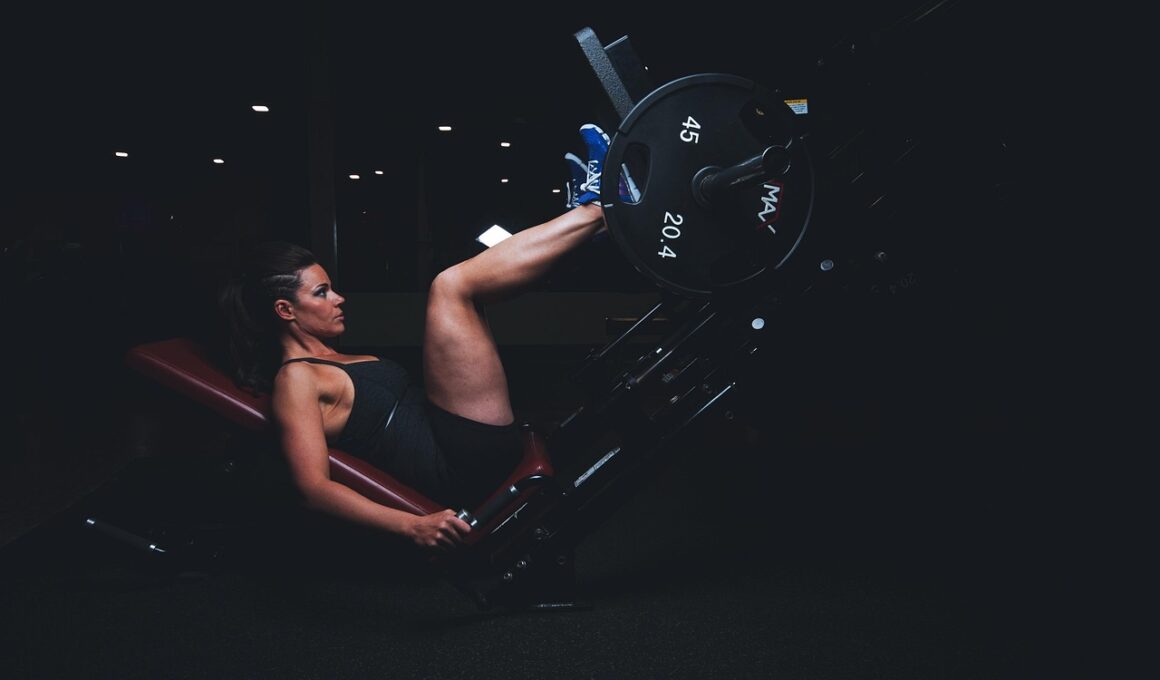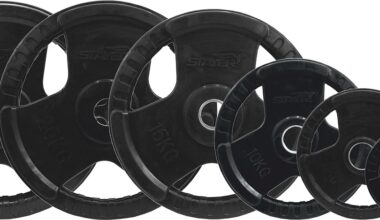Bodyweight Circuit for Powerful and Toned Calves
Building strong and toned calves is essential not only for aesthetics but also for overall functional strength. Bodyweight exercises provide an effective means to target this often-overlooked muscle group without the need for any expensive equipment or gym memberships. This type of exercise can be done virtually anywhere, making it ideal for those with busy schedules or limited access to training facilities. The following exercises will greatly assist in enhancing calf strength while also improving your endurance. It’s important to maintain proper form during each movement to maximize effectiveness and minimize the risk of injury. This circuit uses a variety of movements to engage your gastrocnemius and soleus muscles, ensuring a comprehensive workout. The program can be adjusted based on your fitness level, allowing everyone from beginners to advanced practitioners to participate. By incorporating these exercises into your weekly routine, you can see significant improvements in leg strength, stability, and overall athletic performance. Let’s dive deeper into each exercise and its benefits to help you achieve those desired powerful calves. Ensure you have sufficient space and wear appropriate footwear to protect your feet as you perform these routines.
The first exercise in our calf strengthening circuit is the classic calf raise, a staple for any lower body workout routine. To perform this move, stand with your feet shoulder-width apart and slowly raise your heels while balancing on the balls of your feet. Hold this position for a count of two before lowering back down. It is critical to focus on a full range of motion, extending your heels as high as possible and lowering them all the way for maximum muscle engagement. Consider doing three sets of fifteen repetitions, resting briefly between each set. You can vary this exercise by performing it on a stair step or any elevated surface, enabling a greater stretch at the bottom of the movement. This variation can amplify the challenge and strengthen your calves further. Additionally, you can try single-leg calf raises to increase the intensity even more. As you get more comfortable with this exercise, you might also consider increasing the number of reps or introducing weights to your routine to further enhance your strength and endurance. Remember to breathe steadily throughout the exercise to maintain proper oxygen flow.
Next up in our bodyweight circuit is the seated calf raise. This variation targets the soleus muscle, which sits beneath the gastrocnemius and plays a crucial role in calf development. To do this exercise effectively, sit on a sturdy chair with your feet flat on the ground. Keep your back straight and engage your core as you lift your heels off the ground, pressing through the balls of your feet. Hold the top position for a moment before slowly lowering back down. The controlled movement is vital for maximizing muscle contraction, so avoid bouncing or using momentum. Aim for three sets of twelve to fifteen repetitions, ensuring that each rep is deliberate and focused. To add variety, you can perform this exercise with one leg, which forces your stabilizing muscles to engage and enhances overall balance. The seated calf raise is a fantastic way to develop deeper muscle fibers in your calves, which often go unnoticed. Implementing this exercise into your routine will help improve your ability to perform other movements that require strong calves, such as running or jumping.
Another effective exercise is the donkey calf raise, which can add a fun twist to your calf workout. To execute this move, find a partner or a sturdy object to lean against while you place your hands on it for support. Stand on the balls of your feet, elevating your heels as high as possible. The main focus is on maintaining the tension in your calves throughout the movement. Aim for three sets with a range of 15 to 20 reps while concentrating on a slow and steady rise and fall to fully engage the calf muscles. This exercise targets both the gastrocnemius and soleus muscles simultaneously, providing a well-rounded workout. The added range of motion helps improve muscle hypertrophy and strength, making your calves appear more sculpted. What further enhances this exercise is the ability to perform it anywhere, whether at home or outdoors. Its versatility makes it perfect for anyone looking to boost their calf strength without complicated equipment. As you master this movement, adjust the speed and intensity to continually challenge yourself and keep the workout interesting.
To continue building endurance and strength in your calves, consider incorporating lateral calf raises into your routine. This unique movement not only targets your calves but also engages your ankle stabilizers and improves balance. Begin by standing with your feet together before shifting weight onto your right foot, while your left foot extends outward to the side. Lift your left heel toward the ceiling, holding for a moment before lowering it back to starting position. Complete all repetitions on one side before switching to the other foot. For added challenge, you can add resistance in the form of ankle weights or resistance bands. Aim for three sets of 12-15 reps on each side to promote strength and coordination. Lateral calf raises can improve your athletic performance, particularly for sports requiring lateral movement and agility. Besides increasing calf strength, this exercise can also contribute to preventing common injuries associated with weak calf muscles, such as strains. Including lateral movements in your training also promotes better overall leg endurance, essential for sports and fitness alike, and keeps your workouts fresh and engaging.
Reinforcing Flexibility and Mobility
Alongside muscle strength, flexibility and mobility are crucial for well-rounded calf development. Integrating dynamic stretching into your routine before performing calf exercises can significantly improve your performance. Dynamic stretches involve controlled, smooth movements that enhance flexibility and prepare your muscles for action. An example of a dynamic stretch for your calves is the ankle bouncer; stand with your feet flat and bounce lightly on the balls of your feet. This prepares your calves for the workout ahead, increasing blood flow and reducing injury risk. After your workout, it is essential to include static stretching that focuses on not only the calves but also the surrounding muscles. This can help in maintaining the flexibility gained during your training sessions. Hold each stretch for about 20-30 seconds to ensure effective lengthening of the muscle fibers. Incorporating foam rolling before and after calf workouts can also enhance recovery and alleviate tension built up during exercise. Constant attention to flexibility helps maintain the muscles’ ability to perform optimally, contributing to a healthier, stronger body overall, and should not be overlooked in your fitness regimen.
Lastly, consistency is key when implementing your calf strengthening workouts. Establishing a regular routine is critical for achieving desired results and keeping your motivation levels high. Aim to include calf-focused exercises at least two to three times per week while varying the routine to challenge the muscles continuously. As your strength improves, feel free to increase the number of sets or repetitions, adjusting intensity to suit your fitness level. Keeping a journal to track your progress can also be beneficial, allowing you to identify patterns and areas for improvement. Remember to also listen to your body. Rest when needed, and don’t be afraid to introduce recovery days into your schedule, as this will help your muscles repair and grow stronger. Balancing calf workouts alongside other lower body exercises such as squats and lunges will contribute to an effective overall fitness routine. Celebrating your achievements, no matter how small, will maintain your enthusiasm as you work towards powerful calves. By staying dedicated and following these guidelines, you can transform your lower body appearance and performance in no time.
In conclusion, bodyweight exercises provide a versatile and effective way to target calf strength and enhance overall lower body performance. Through exercises like calf raises, lateral raises, and dynamic stretches, individuals can significantly improve their muscle tone, strength, and endurance. Moreover, combining these exercises with proper flexibility routines enhances mobility, reducing injury risk. This holistic approach makes calf workouts engaging and adaptable to various fitness levels and goals. Staying consistent and tracking progress helps maintain motivation and enables gradual improvement, ensuring results over time. Remember, as you work through your bodyweight circuit, focusing on form and breathing is vital to avoid injuries and maximize muscle engagement. Additionally, consider integrating these exercises into your warm-up or cooldown two to three times a week for maximum benefit. By gradually increasing the complexity of your workouts, you can create a challenging workout environment that motivates continued growth. Ultimately, strong and toned calves not only improve your appearance but also enhance athletic performance, making it easier to engage in various physical activities. Emphasizing calf strengthening in your fitness routine will lead to improved lower body stability, performance, and resilience. Start today on your journey toward powerful and toned calves!


